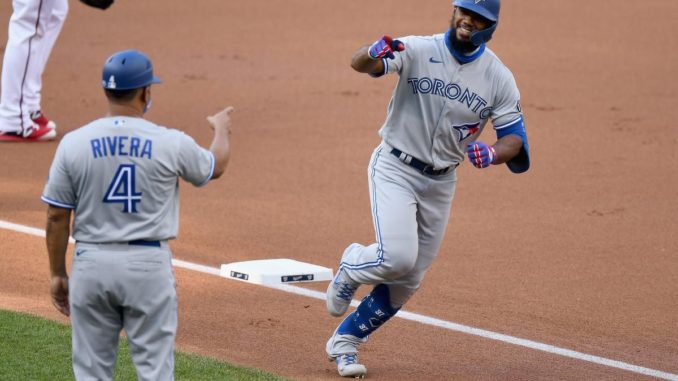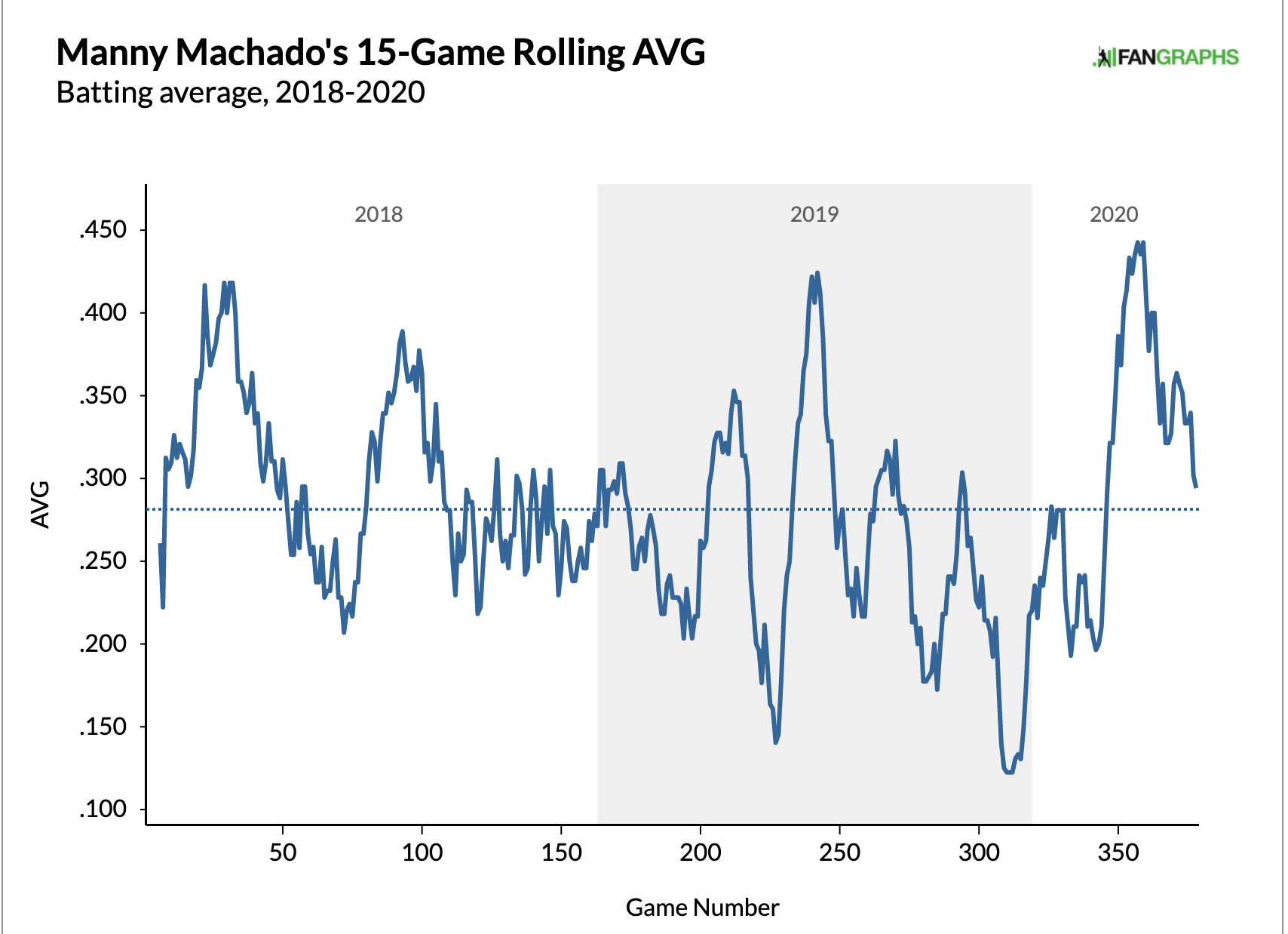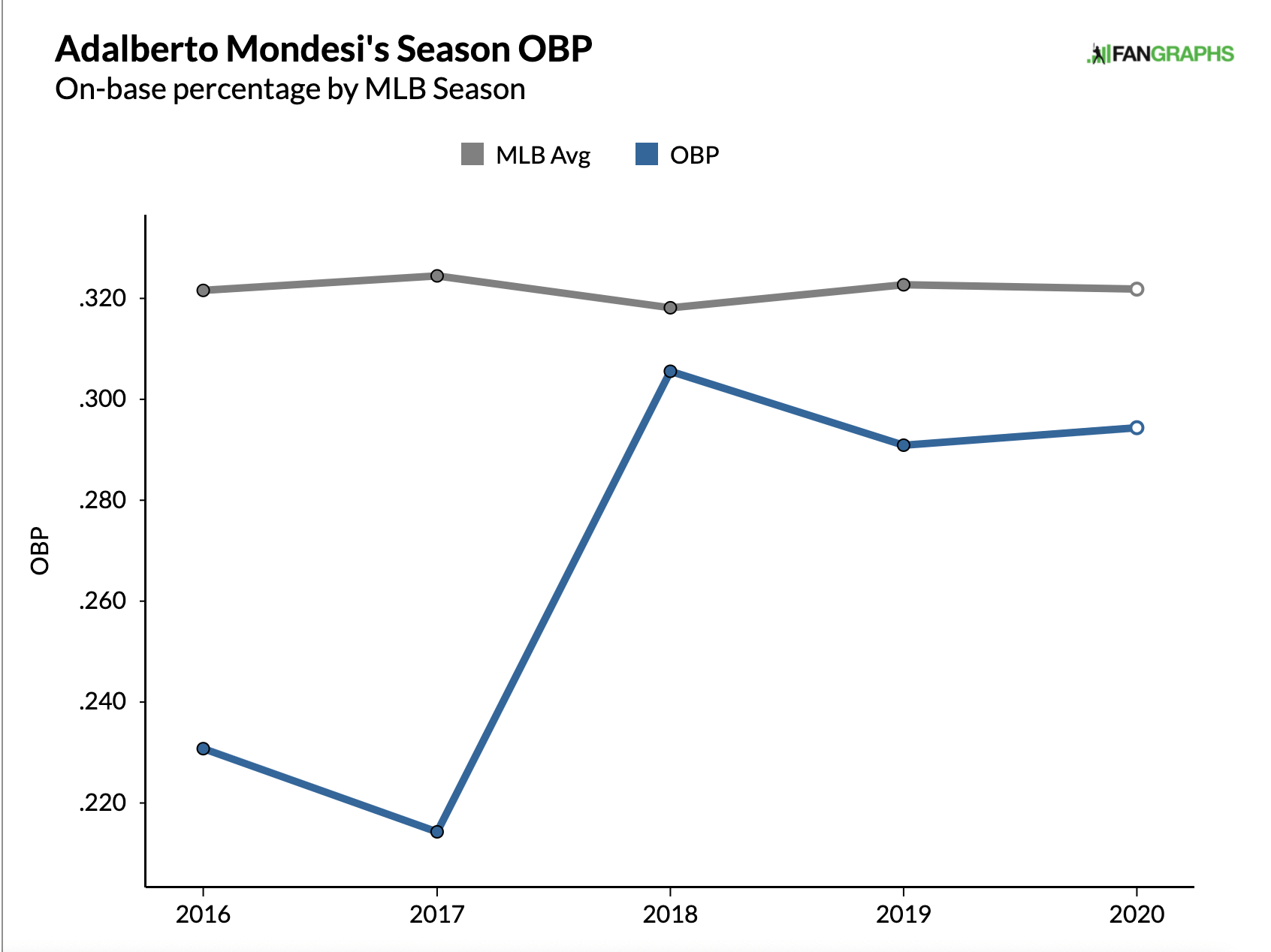
As pitchers and catchers begin to report, it’s not just MLB fans who get excited. It’s also the thousands of virtual managers (myself included) who begin to set up their fantasy baseball leagues.
Before you begin drafting, here are a few players to avoid as they may be considered “bust” material.
Catcher
Salvador Perez (Kansas City Royals)
Perez has been a productive player over the last several years at such a shallow position, averaging over 24 home runs per season between 2015 and 2018. Over that time, he has put up a .252 batting average. While these numbers seem solid for a catcher, the issue lies in his draft position. Currently, Perez has an ADP of 80, as a result of coming of a career season where he hit .311 and hit 11 home runs. Perez had a 25.6 percent home run to fly-ball rate last year, when the MLB average is slightly below 10%. Also, With an ADP of below 80, taking him in this area leaves little room to profit and a higher chance at being a bust when there are many other stronger hitting and pitching options.
1B
Jose Abreu (Chicago White Sox)
After winning NL’s MVP in 2020, Abreu is likely to be off the board by round 3 this year. While their aren’t as many troubling hitting statistics for Abreu, a good rule of thumb when drafting is not to pay a massive premium after career seasons (think Pete Alonso last year). Abreu turned 34 this year, and a decline could happen sooner rather than later. It is hard to pay-up at his third-round draft price, expecting him to post MVP caliber numbers again in 2021.
2B
Dylan Moore (Seattle Mariners)
Moore had a massive 2020 season. In 159 plate appearances, Moore smacked eight home runs and stole 12 bases to go with a .255 batting average. Pretty impressive numbers for the abbreviated season. However, Moore struck out in 27% of hit at bats and has a career 30.8 percent strikeout rate. Moore could be a 20/20 asset, though, if his batting woes flare up, he could be a .200 hitter finding himself on the bench. Moore also had serious trouble against the breaking ball, he hit just .143 and .158 against them. To make matters worse, Mariners manager Scott Servais said that Moore and Shed Long will compete for the second base job in Spring Training. Long is a much better defender than Moore, though Moore has the versatility to play all over the field. Over the last two seasons, he has played every position but catcher. If he struggles with his swing and miss stuff, he could find himself on the bench, which is my concern here.
3B
Manny Machado (San Diego Padres)
When looking just at 2020 production, Machado demands a high draft pick (16 ADP on Yahoo). According to Razzball’s player rater, Machado came in as the eighth-best player in standard 5×5 roto leagues. Though in 2019, despite a relatively solid performance, Machado came in as the 124th player. Machado is baseball’s GME, way too much volatility.
Look at Machado’s batting averages over the last four seasons: .259, .297, .256, .304. You cannot afford to take someone in the second round who will give you a batting average in the .250 range. As we have seen, the upside is obvious, but is hardly to be expected.

SS: Adalberto Mondesi (Kansas City Royals)
Mondesi is likely to be a first round draft pick in most leagues above 12 people, yet that seems way too high given his inconsistent hitting. Sure. Mondesi has the potential to be a 20 HR/50 SB type player, or his poor hitting and volatile contact rates could land him on the bench.
Rob Silver wrote a great piece over at Rotowire. He stated that 218 players since 1960 have stolen 50 or more bases. Of those 218, just one had an OBP below .280, while two had an OBP under .290, and only seven had an OBP below .300. He also stated that if Mondesi does join the 50 stolen base club, he would likely post the highest strikeout rate of any player to do it. Jonathan Villar’s 25.6 percent strikeout rate in 2018 is the current worst among any 50 base stealers.
Mondesi’s career OBP is .284, and while most 9-cat leagues don’t score OBP, it is still a major factor in stolen base attempts. If you are not getting on base at a good clip, you won’t get the chance to steal bases.

Mondesi also has a career .230 average, hurting your ability to stay competitive in the category.
Finally, outside of last year’s shortened season (were Mondesi played 59 of 60 games), he has struggled to stay on the field. Mondesi’s highest amount of games played in a season is 102 in 2019, adding some doubt to his ability to stay on the field in 2021.
OF: Teoscar Hernandez (Toronto Blue Jays)
Pre-draft rankings has Teoscar at rank 79, and while he was a major reason as to why Toronto made the playoffs, there are a few underlying issues.
Despite clubbing 16 home runs in last year’s abrupt season, and 26 in 2018, one major issue is his batting average. After hitting a combined .235 over nearly 1000 plate appearances in 2018 and 2019, Hernandez hit .289 in 2020, yet the statcast numbers paint a different story. Hid strikeout rate was a dreadful 30.4 percent. Hernandez’s walk rate also dropped from 9.7 percent to 6.8 percent in 2020. Furthermore, Hernandez swung nearly ten percentage points less on pitches in the zone, and his contact rates were among the league’s worst.
Hernandez’s swinging-strike rate also jumped from 14.7 percent to 15.7 percent.
The small sample of 2020 really made everyone forget about Tesocar’s career .237 batting average before his breakout season last year. It may be difficult for Hernandez to put up 2020 like numbers again, and with a round 6/7 price, it may be best to target another player.
OF: Kyle Lewis (Seattle Mariners)
The reigning NL ROY has seen his ADP drop from 90 in the first month of draft season, to 140 currently.
2020 was a tale of two halves for Lewis. In the first half, Lewis was batting .368 with seven home runs and two stolen bases. While over his final 117 plate appearances in the second half, Lewis hit just .150 with four home runs.
Lewis has low contact rates and terrible swinging strike rates. His strikeout rate between 2019 and 2020 of 31.5 percent is not great and has even more room for regression.
Lewis may not be worth the gamble even at an ADP of 140.
Starting Pitcher: Dinelson Lamer (San Diego Padres)
Similarly to Kyle Lewis, Lamet’s ADP has steadily fallen in drafts as we have gotten closer to opening day. his could be from a combination of things. The Padres have loaded up on starting pitchers, leading many to believe that Lamet is not healthy. Lamet was dealing with bicep tendinitis that caused him to miss the end of the 2020 season, causing him to sit out of the playoffs.
Apart from his injury concerns, Lamet’s other problem is that he is a two-pitch pitcher. He solely relies on his slider and four-seam fastball. The slider is among the best in the league, but depending on two pitches as a starter can be challenging. Lamet might be worth the gamble at a certain draft price, but not as a top 100 pick
SP: Zach Plesac (Cleveland Indians)
Plesac enjoyed a very successful 2020 season, despite some off-field trouble (videos of him and Mike Clevinger going out at a bar in Chicago while failing to follow distancing protocols). His eight start sample in 2020 was quite impressive as Plesac posted a 2.28 ERA and a 0.80 WHIP with a 27.7 percent strikeout rate.
Plesac does a great job of limiting hard contact, but his .224 BABIP (how often non-home run batted balls fall for hits) is sure to see regression, as the league average is .300. Not to mention his 91.7 percent left-on-base rate that is sure to come down over a full season (league average is 70-72%).
Of pitchers with at least 50 innings pitched last year, no one had a higher strand rate than Plesac. These factors led Plesac’s FIP, xFIP, xERA, and SIERA to be over a run higher than his “actual” ERA. Three of his eight starts were against the Royals and the Tigers last season, very poor offensive teams. Plesac also had six called strikeouts that were balls.
Plesac’s luck is due to run out at some point, and his off-field troubles may cause issues going foreword (think Michael Porter Jr.). Avoid him if you can
Framber Valdez (Houston Astros):
Framber enjoyed an excellent 2020 season, posting a 3.57 ERA and a 1.23 WHIP in 70.2 innings pitched. He posted a 26.4 percent strikeout rate and a ground ball rate of 60 percent, the only pitcher to post both a 60 percent GB% and over a 25 percent K%. His SIERA (3.23) and FIP (2.85) both suggest he actually underperformed.
Statcast data does not love Valdez, however. Last season, he allowed one of the highest hard-hit rates and exit velocities in the league. His 91.4 mph exit velocity ranked fifth percentile among all pitchers. Valdez’s hard-hit rate of 48.7 percent was better than just four percent of all pitchers in baseball. Some pitchers can get away with this, but it is not good to allow that much hard contact. Valdez’s sinker induces a ton of groundballs, which helps negate some of the concerns, but if Framber leaves ant sinker’s up, and hitters began to lift his pitches, he could be in trouble.
His strikeout rate is likely unsustainable, given his below-average swinging strike rate of ten percent. Valdez can still be a solid pitcher, but drafting him around pick 85 is asking for a lot.
Relief Pitcher: Edwin Diaz (New York Mets):
Diaz makes for a huge boom or bust pick. We have seen the volatility, going from one of the best closers in the league in 2018 with the Mariners to nearly losing his job with the Mets in 2019 after posting a 5.59 ERA. In 2020 however, things completely changed for Edwin, where he posted a 1.75 ERA, and though Diaz saw his walk rate jump to 12.7 percent, his strikeout rate did balloon to 45.5 percent, which is quite impressive.
Diaz had quite a few meltdown moments last year to the ire of Mets fans, and to help hedge this risk, the Mets have strengthened the bullpen by adding Trevor May and still have other reliable options in Dellin Betances and Seth Lugo. It will only take several blowup outings for Diaz to lose his job to someone like May.
At the price of a top 75 pick, Diaz is easy to avoid because of his volatility. There is no denying the elite upside, but there is also a lot of downside, and Diaz is prone to lose the closer role quickly.
Works Cited:
